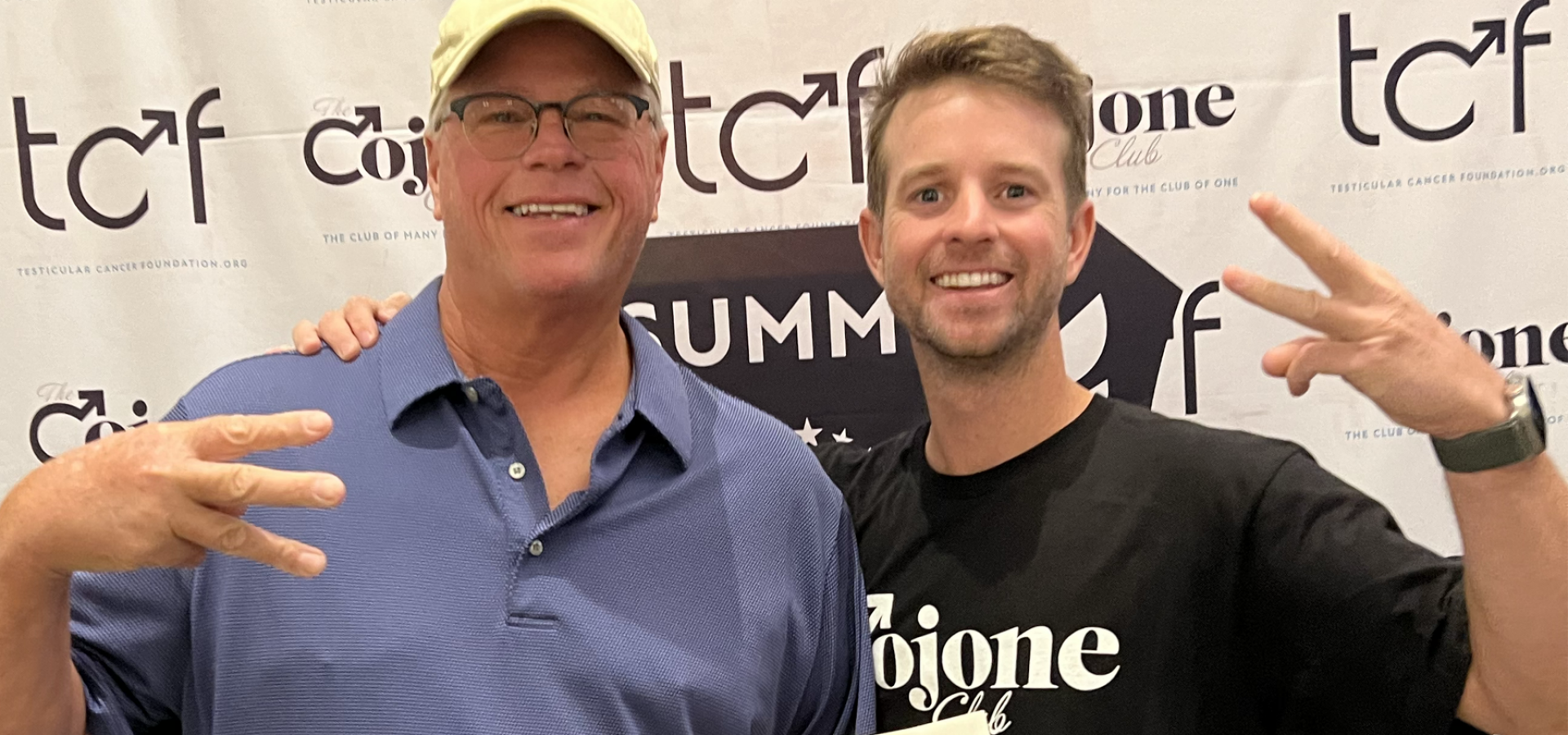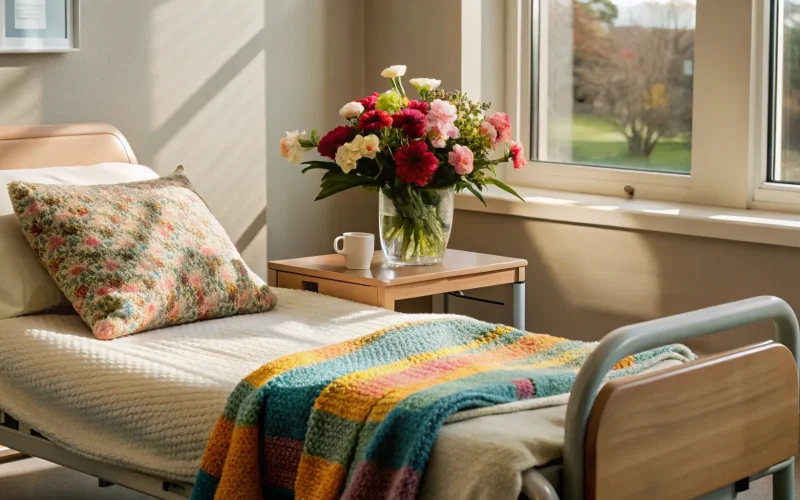In 1994, when Steve Gavers was 32, he worked a construction job, played on four softball teams, and hadn’t been to the doctor in 16 years. But then he started noticing low-level pain where his left front pocket hit. It was a nuisance, but not enough to slow him down, so he toughed it out for a while.
The pain got worse when he played softball. It shifted to a dull ache in his groin area. And it worried him. Which was something, because Steve is not the worrying type.
So he called his mother and asked her to call the doctor he’d seen growing up. She set up an appointment, and Steve went, laughing with his doctor as they always had. That ache he’d been feeling? A hernia, his doctor said, performing the physical exam.
Then he got to Steve’s genitals.
“Uh oh,” said the doctor.
“What?” said Steve. “Double hernia?”
But the doctor wasn’t joking anymore. “I found something,” he said.
Embryonal Carcinoma
That “something” was a lump the size of a No. 2 pencil eraser on the back inside of Steve’s left testicle.
“You need an ultrasound,” said the doctor, and half an hour later Steve had a diagnosis: testicular cancer.
That was a Friday.
On Saturday, Steve went out with his friends to their favorite bar, Chuck’s, on Lake Geneva. He wasn’t in denial, exactly. But he was in the prime of his life. How bad could things be, really? Then he went to the men’s room. His left testicle had swollen to the size of an orange. It didn’t hurt at all, but the change was unignorable. He swallowed, zipped up.
The next morning, the swelling had subsided, but Steve had made up his mind. He had to act, and he had to act now. He had surgery later that week to remove the lump. But that wasn’t the end of the journey. Because Steve had been reading in the meantime, and he’d learned that testicular cancer can spread to the lymph nodes. Until that week, he hadn’t realized that lymph nodes are located throughout the body.
His primary care doctor wasn’t able to give him an assessment, but referred him to a provider at the University of Wisconsin-Madison, 100 miles north.
A hundred miles is a long way to drive when you’re waiting for news that could define the rest of your life. Steve took his mother with him. In the car, it was impossible not to think about his mother’s family: already, Five of her siblings had died of cancer. Would Steve be next in line?
When they finally arrived, the doctor didn’t sugarcoat the prognosis:
“I’ll give you three options,” he said. The first was to wait and see what happened.
The second was surgery: RPLND, or retroperitoneal lymph node dissociation. They would open Steve up and remove any affected lymph nodes. All told, the procedure would take 12 hours, and recovery would take weeks.
“What’s the third option?” said Steve.
“The third option is that you do nothing,” said the doctor, who would never win an award for bedside manner. “And if you choose that one, you won’t be here in a year.”
The Second Option
It was July 15. The doctor’s office was so cold his mother had goosebumps on her arms. When they walked outside, the humid air hit them like bad news.
On the drive home, Steve decided to do the surgery.
Surgery, chemo, all of it. A month later, he and his mother drove up to Madison again, and Steve had 26 lymph nodes removed. He spent 18 days in the hospital, in part because recovery did not go smoothly. His stitches didn’t hold the first time. He caught pneumonia. Three weeks after returning home, he had to go back again for the second part of the surgery, which included insertion of mesh throughout his entire abdomen.
And then he started chemo.
Surgery was the toughest physical part of his treatment, but the biggest mental challenge for Steve was chemo. Nobody warned him that his whole body would change. Nobody explained, for example, how important it was to drink, drink, drink to flush the toxins that the chemo introduces into your body.
For his fourth and final round of chemo, Steve decided he wanted to be independent, so he didn’t stay with his mother after the infusion. On his own, though, he didn’t keep up with his fluid intake and he got sleepy. His mother called; they fought. He just wanted to sleep. Luckily, she came over. By the time she’d driven him to the end of his driveway, he’d passed out.
He slept all the way to Madison, where he needed a wheelchair to get to the ER. Inside, every joint in his body started hurting. He climbed out of the waiting room chair to lie on the floor. He was six foot four, 312 pounds. He didn’t know it at the time, but his body was shutting down.
The next thing he knew, he woke up in a room, an IV in his arm.
Now, he says, he tells anyone who’s getting chemo: “Drink, drink, drink, drink, drink.”
Barndance
In the years that followed Steve’s diagnosis and treatment, he learned a lot about testicular cancer. For example, that there are many types of testicular cancer – he hadn’t realized there was more than one.
By 2000, he was pissed.
“We had all this information, and we had treatments and still, people didn’t know what they needed to know,” he said. They didn’t know they should be doing self-exams. They didn’t know the warning signs that something was wrong.
So he set about getting people the information they needed.
And because Steve is a person who likes to laugh and dance and drink and eat, he decided he’d get them that information by hosting an event. A fun event.
The first person he called was Denise, a classmate who’d run the school newspaper. He told her what he was thinking, and she agreed to join forces. Another friend, Andy, was the president of a bank. Steve asked if he could open an account. Andy agreed, then asked how he could help.
Momentum picked up: as word spread, more people asked to be involved. Steve built a team. A lawyer joined and formed a 501(c)(3). Now the only question was what kind of event they should have.
The idea came from Steve’s grandfather, who talked about how young people used to meet, back in his day. They’d clean out a barn, set up a place to play music, and dance.
And so Barndance was born.
That first year, Steve hoped to attract 200 people and raise $10,000.
He talked a friend in a band into performing, convinced a friend who owned a bar to pour drinks. He rented a building at the fairgrounds.
Three weeks before the event, Andy called from the bank.
“You’re not going to believe this,” he said. “But we’re going to need a new venue. We’ve outgrown the fairgrounds.”
They scrambled and found a new location. The night of Barndance, they had live music, dancing, grilled food, drinks. They had a live auction, and they’d sold tickets besides. It was July 15, six years to the day after Steve’s decision to do surgery.
Andy called from the bank the next day to report the fundraising total: $125,000.
Steve was so stunned he dropped the phone. He’d considered $10,000 a stretch goal, remember. When he bent to pick up the receiver, Andy was laughing, and Steve joined in. A hundred and twenty-five thousand dollars. He was really doing this thing.
Since then, Steve’s nonprofit, the Gavers Community Cancer Foundation, has held the event on or around July 15 every year. This year, they hit a major fundraising milestone: $10 million.
And because the Gavers Community Cancer Foundation is 100 percent volunteer-run, every penny of that money has gone to the following organizations:
- Northwestern Hospital’s Get Checked program, which offers screenings for lung cancer and breast cancer
- Family Health Partnership Clinic, which provides care for the uninsured and underinsured
- Anne and Robert H. Lurie Children’s Hospital of Chicago, specifically to fund research and treatment for DIPG, a rare cancer
- Testicular Cancer Foundation, to raise awareness about testicular cancer
- Brian Piccolo Cancer Research Foundation at Rush University Medical Center in Chicago
Barndance is the Gavers Community Cancer Foundation’s tentpole event, but it’s not the only thing they do.
“We make it so you talk about it all year,” Steve explained, because that’s when we need awareness. In the 24 years since Steve launched the Gavers Community Cancer Foundation, the board has lost only two members, both to cancer. He also lost his mother, to breast cancer. And he continues to raise funding and awareness so that many other people – most of whom he’ll never meet – won’t have to lose their lives or their loved ones the same way.Learn more about the event at https://gavers.org/barndance/.





